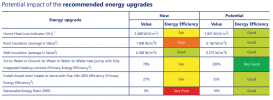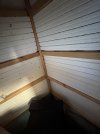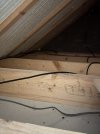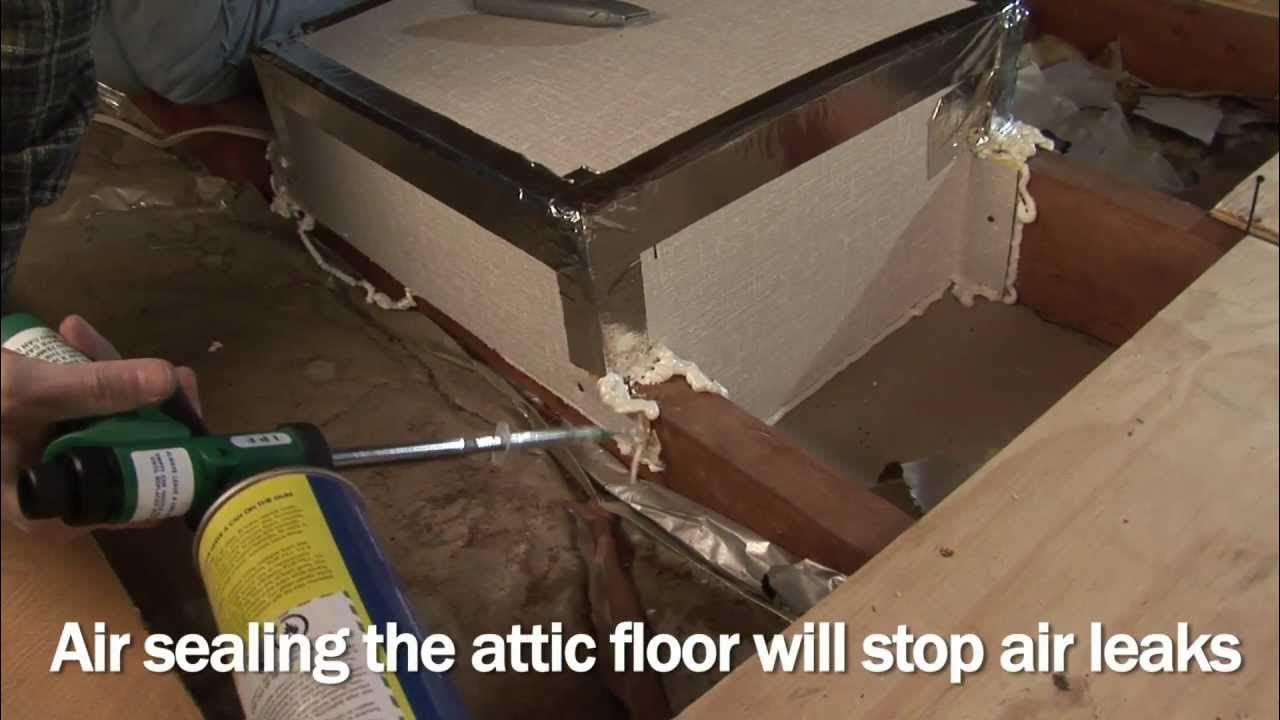IronMike247
New Member
- Messages
- 7
Hi,
As the title suggests, I am currently in the process of buying a house, and I am hoping to do a few upgrades once we have moved in. Primarily, we are hoping to improve the BER rating to a B3 or better to avail or green mortgage rates, but also hoping to reduce energy bills. The house would need to be upgraded to B3 within 6 months of drawing down the mortgage in order to avail of this rate.
I have a few questions around the upgrades in general.
Currently the house is at the lower limit of C2 (197 kwh/m2/year). The BER assessment was done in September of last year. The house is a 2 story, 4 bedroom detached of appox 188m2.
The advisory report lists a few recommendations to increase efficiency:

The roof insulation seems to be the main starting point to me. The engineer provided photos of the attic which appear to show a quite thin layer of polystyrene insulation, which I assume is not doing much.
The house is heated by an oil boiler. This is a Firebird Popular 120. I am not sure on the number of radiators in the house, but I can check on this later.
Is there scope for upgrade potential with the boiler? I understand that a condensing boiler may be more efficient than this one, but is this an improvement worthy of the upfront investment?
To go along with that, I understand there is an SEAI grant available for upgrade of heating controls. Would smart heating controls be compatible with this boiler?
As I understand, there is potentially scope for a large improvement in BER rating by adding in a solar system. I am not too sure on the details of how many panels I would require, whether to get a battery etc.
Would it be possible for me to achieve a B3 with this house by adding in the roof insulation, adding heating controls, and adding a solar system?
Is there a way I can calculate the potential upgrade values?
Finally, I understand that in order to get the SEAI grants for the upgrades, I need to get the BER re-assessed. Does this have to be done for each individual upgrade, or can one "catch all" BER assessment be done after all upgrades are complete? I will not be going for the SEAI one stop shop.
As the title suggests, I am currently in the process of buying a house, and I am hoping to do a few upgrades once we have moved in. Primarily, we are hoping to improve the BER rating to a B3 or better to avail or green mortgage rates, but also hoping to reduce energy bills. The house would need to be upgraded to B3 within 6 months of drawing down the mortgage in order to avail of this rate.
I have a few questions around the upgrades in general.
Currently the house is at the lower limit of C2 (197 kwh/m2/year). The BER assessment was done in September of last year. The house is a 2 story, 4 bedroom detached of appox 188m2.
The advisory report lists a few recommendations to increase efficiency:

The roof insulation seems to be the main starting point to me. The engineer provided photos of the attic which appear to show a quite thin layer of polystyrene insulation, which I assume is not doing much.
The house is heated by an oil boiler. This is a Firebird Popular 120. I am not sure on the number of radiators in the house, but I can check on this later.
Is there scope for upgrade potential with the boiler? I understand that a condensing boiler may be more efficient than this one, but is this an improvement worthy of the upfront investment?
To go along with that, I understand there is an SEAI grant available for upgrade of heating controls. Would smart heating controls be compatible with this boiler?
As I understand, there is potentially scope for a large improvement in BER rating by adding in a solar system. I am not too sure on the details of how many panels I would require, whether to get a battery etc.
Would it be possible for me to achieve a B3 with this house by adding in the roof insulation, adding heating controls, and adding a solar system?
Is there a way I can calculate the potential upgrade values?
Finally, I understand that in order to get the SEAI grants for the upgrades, I need to get the BER re-assessed. Does this have to be done for each individual upgrade, or can one "catch all" BER assessment be done after all upgrades are complete? I will not be going for the SEAI one stop shop.


